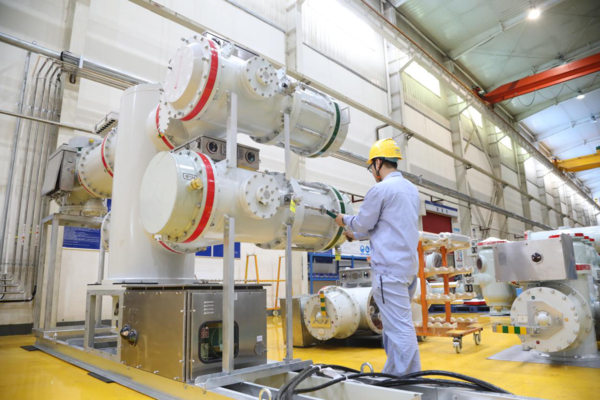Weihai-made wind turbine GIS powers China's first deep-sea floating wind project
The Shandong Provincial Department of Industry and Information Technology has released its 2025 list of enterprises and products recognized for producing the province's first key technical equipment and components. Among those honored, Pinggao Group Weihai High Voltage Electric, located in Weihai Torch Hi-tech Science Park, was recognized for its independently developed gas-insulated switchgear (GIS) for wind turbine towers.
The fully domestically produced GIS is set to play a pivotal role in China's first large-scale deep-sea floating wind project off Wanning, Hainan province. Serving as the main switch for offshore turbines, the GIS ensures safe and reliable operation in some of the most demanding marine conditions.
Floating wind turbines face much harsher environments than their nearshore counterparts. Anchored to the ocean surface rather than the seabed, they must withstand salt spray, strong waves, and typhoons. At an average water depth of 100 meters, every meter of deployment requires precise engineering and resilient equipment.

A technician inspects the mechanical transmission system of a gas-insulated switchgear (GIS) inside a wind turbine tower. [Photo provided to chinadaily.com.cn]
Pinggao Weihai began designing the deep-sea GIS in 2022, addressing a challenge without any domestic precedent. After three years of intensive research and development, the company achieved a full technological breakthrough, producing all key components entirely in China. The system has already been successfully used by top Chinese manufacturers, including Shanghai Electric, CRRC Zhuzhou, and Dongfang Electric, setting a new benchmark for the industry.
Engineered for durability, the GIS meets C-5H corrosion standards, tolerates temperatures up to 70 degrees Celsius, and operates reliably in both offshore and onshore environments. Its special sealing keeps annual gas leakage below 0.1 percent, while mechanical components endure more than 10,000 operations, ensuring a long service life.
Looking ahead, Pinggao Weihai is upgrading its 66 kV GIS to a fluorine-free, clean-air model and developing 110 kV tower GIS to lead domestic production at higher voltages. These advances not only bolster a resilient, self-reliant supply chain but also support China's strategy to lead in offshore wind technology. (Edited by Hu Kaili)








